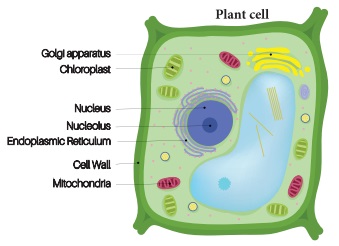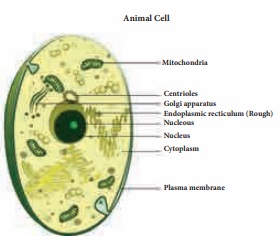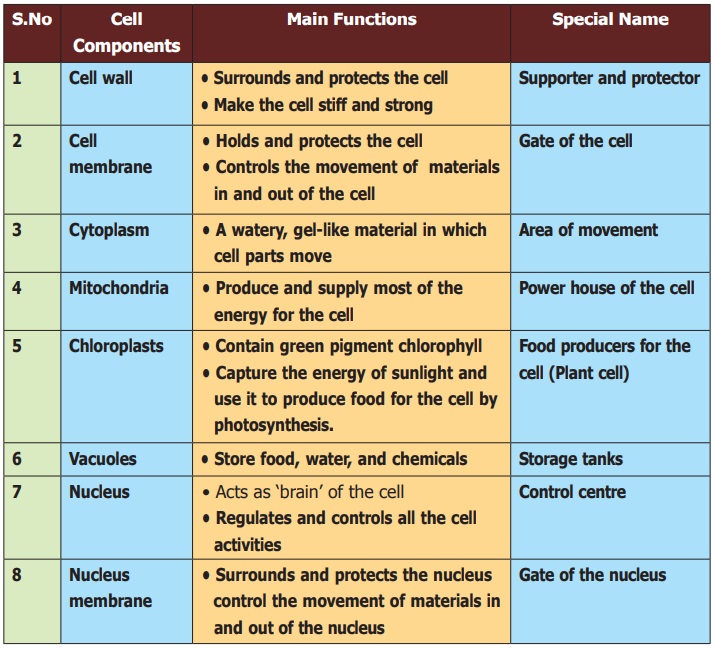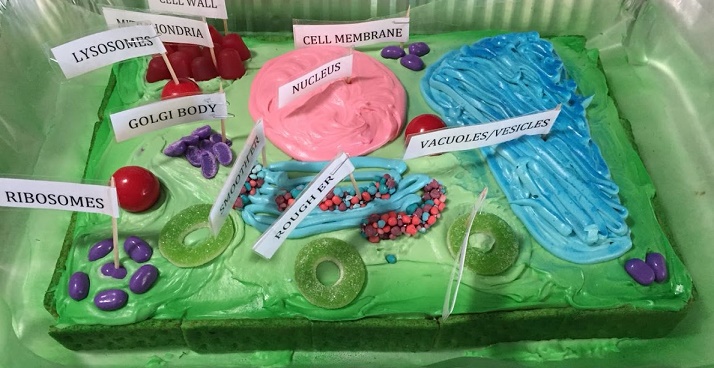The Cell | Term 2 Unit 5 | 6th Science - Questions Answers | 6th Science : Term 2 Unit 5 : The Cell
Chapter: 6th Science : Term 2 Unit 5 : The Cell
Questions Answers
Evalution
I. Choose the appropriate answer
1. The unit of measurement used for expressing
dimension (size) of cell is ____
a. centimeter
b. millimeter
c.
micrometer
d. meter
Answer: (c) micrometer
2. Under the
microscope Priya observes a cell that has a cell wall and distinct nucleus. The
cell that she observed is
a. plant cell
b. an animal cell
c. a nerve cell
d. a bacteria cell
Answer: (a) a plant cell
3.
A ‘control centre’ of the eukaryotic cell is
a. Cell wall
b. Nucleus
c. Vacuoles
d. Chloroplast
Answer: (b) Nucleus
4. Which one of
the following is not an unicellular organism?
a. Yeast
b. Amoeba
c. Spirogyra
d. Bacteria
Answer: (c) Spirogyra
5. Most
organelles in a eukaryotic cell are found in the
a. Cell wall
b. cytoplasm
c. nucleus
d. Vacuole
Answer: (b) cytoplasm
II. Fill in the Blanks
1. The instrument used to observe the cell is the microscope
2. I control the
food production of a cell. Who am I?
3. I am like a
policeman. Who am I cell wall?
4. The Term “ cell”
was coined by
5. The egg of an Ostrich
is the largest single cell.
III. True or False. If False, give the correct
answer.
1. A cell is the
smallest unit of life.
2. Nerve cell is
the longest cell
3. Prokaryotes were
the first form of life on earth.
4. The organelles
of both plants and animals are made up of cells.
The cells of both plants and animals are made up of
organelles.
5. New cells are produced from existing cells.
IV.
Match the following
1. Control center - Cell membrane
2.
Food producer(Plant cell) - Mitochondria
3.
Gate of the nucleus - Nucleus
4.
Gate of the cell - Chloroplasts
5.
Energy producer - Nuclear membrane
Answer:
1. Control center - Nucleus
2. Food producer(Plant cell)
- Chloroplasts
3. Gate of the nucleus - Nuclear membrane
4. Gate of the cell - Cell membrane
5. Energy producer – Mitochondria
V.
Arrange in a correct sequence
1. Elephant, Cow, Bacteria, Mango, Rose plant.
Bacteria, Rose plant, Mango,
Cow, Elephant.
2. Hen Egg, Ostrich
egg, Insect egg.
Insect egg, Hen Egg, Ostrich egg.
VI. Analogy
1. Prokaryote : Bacteria :: Eukaryote : Alga
2. Spirogyra :
Plant cell :: Amoeba :
3. Food producer :
Chloroplasts :: Power house :
VII. Give very short answer
1. Who discovered the cell in 1665?
Robert Hooke
2. What type of cells do we have?
Eukaryotic cells
3. What are the essential components of a cell?
Cell membrane, cytoplasm, nucleus
4. What are the organelles found only in plant
cell?
Chloroplasts
5. Give any three examples of eukaryotic cell?
Plants, animals, algae
6. Which one is called as “Area of movement”?
Cytoplasm
7.
Shiva said “ Bigger onion has larger cells when compared to the cells of
smaller onion”! Do you agree with his statement or not ? Explain Why?
No, I don't agree with the statement. Cell size has no relation to
the size of an organism.
VIII.
Give short answer
1.
Why cells are called building blocks of life?
As bricks are the basic building block of a brick wall cells are
the building blocks of animal or plant body. The cell is the basic structural and
functional unit of every living organism. So it is called the building block of
life.
2.
Identify any four parts of the Plant cell.


3. Distinguish between prokaryotic and
eukaryotic cells

Prokaryotic cell
• Its diameter ranges from 1 to 2 micron
• Absence of membrane bound organelles
• Nucleus consisting of no nuclear membrane
• Absence of nucleoli
Eukaryotic cell
• Its diameter ranges from 10 to 100 micron
• Presence of membrane bound organelles
• True nucleus consisting of nuclear membrane
• Presence of nucleoli
4. Make sketches of animal and plant cells which
you observe under microscope.


5. Write about the contribution of Robert Hooke
in cell biology.
The Englishman Robert Hooke was a scientist, mathematician, and inventor.
He improved microscope which was used in those days, and built a compound microscope.
He placed water-lens beside the microscope to focus the light from an oil-lamp on
specimens to illuminate them brightly so that he was able to see the minute parts
of the objects clearly.
One day Hooke made thin sections of the cork and observed them through
his microscope. He observed many small identical chambers which were hexagonal in
shape. He was surprised.
After that he saw many objects like Butterfly's wings, Bee's compound
eyes etc.,
Based on these observations Hooke published a book named Micrographia
in the year 1665, where he first used the term cell. He described the structure
of tissue using the term cell.
IX. Answer in detail
1. Tabulate any five cell organelles and their
function.

2. Draw a neat labelled diagram of a
prokaryotic cell.

X. Project
1. Use your
imagination and create 3-D model of a plant cell?

2.
You can use numerous food materials such as a jelly and some cake to make a
cell body. Cell organelles can be made using nuts and dry fruits. You can
display the model in your class room and invite teachers or students from other
classes to rise questions on the project and try to give answer.

Related Topics